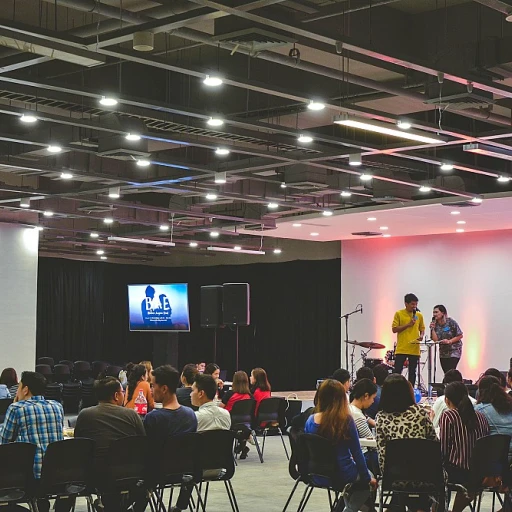Overview of New Jersey's Sick Leave Law
Key Aspects of New Jersey's Sick Leave Rules
New Jersey's sick leave law stands as a comprehensive framework aimed at securing the welfare of employees when illness strikes. Both employers and employees bear responsibilities under this structure. At its core, the earned sick leave policy mandates that employers provide paid sick leave to their workforce, allowing them to address their own health needs or care for a family member in distress.
Through this regulation, a mechanism is set in place where employees accumulate sick leave at a rate of one hour per every 30 hours worked, making them eligible for up to 40 hours of paid sick leave per year. This initiative is universal, impacting all sectors including both private and public health sectors. The law aids in maintaining a balance between work and family commitments, thereby enhancing the overall public health.
Exploring Sick Leave Usage and Coverage
The state’s sick leave law permits leaves for various circumstances that go beyond traditional illness or injury. They extend to cover circumstances involving care for family, addressing intimate partner or sexual violence, and the closure of workplaces due to public health emergency. Employers must navigate these stipulations and ensure compliance, often pursuing collective bargaining agreements to better manage bargaining agreements with unionized workforces.
For employers, understanding the intricacies of such regulations is essential. The ability to allocate sick time properly, considering every accrued benefit year, demands exactitude. For additional insights on choosing work benefits with AI and how they can optimize their operations, stakeholders may refer to expert resources. This legislation is dynamic, with ongoing adjustments made to address emerging needs of the labor market.
Challenges in Managing Sick Leave
Managing Paid Sick Leave Compliance
Compliance with New Jersey's sick leave law can be daunting for employers and employers employees alike, particularly when it comes to tracking hours worked and ensuring everyone gets their due paid sick leave. The state mandates earned sick time, tying it to hours worked. Specifically, for every 30 hours worked, an employee earns 1 sick hour, up to a maximum of 40 hours per benefit year.
This means that employers must maintain accurate records of each employee's hours to calculate earned sick time accurately. Moreover, employers need to be vigilant to remain compliant with the leave law. The New Jersey sick leave regulations encompass more than just hours; they mandate earned sick leave can be utilized for various situations.
- Medical diagnosis and care treatment for physical or mental illness injury by the doctor.
- Time taken to address the effects of sexual violence, public health issues, and caring for a family member.
- Caring for a family member during illness injury or health condition that necessitates special attention.
By grasping the intricacies of the law, businesses can avoid penalties and ensure their workforce feels cared for, fostering a healthier work environment.
In the collaborative effort to tackle these challenges, understanding different employee types and their work dynamics is essential in managing compliance effectively.
Role of Artificial Intelligence in HR
Embracing Technology for Better Sick Leave Management
With the complexities surrounding New Jersey's sick leave laws, integrating technology, particularly artificial intelligence, into human resources has become not just beneficial but essential. Employers are constantly faced with the challenges of ensuring compliance with state regulations while also managing employees' needs effectively. This is where AI steps in, bridging the gap between meticulous compliance and efficient management.
The role of AI in HR is rapidly evolving, providing transformative solutions for managing paid sick leave. These technologies assist in navigating the legal framework, ensuring that both employers and employees are aligned with the law. AI systems can monitor hours worked, track earned sick leave, and automate documentation processes, easing the administrative burden on employers while enhancing transparency for employees.
One of the significant advantages AI brings to the table is in accurately forecasting and managing sick leave patterns. By analyzing data such as hours worked and patterns of leave taken, AI can predict potential spikes in absences, assisting employers in workforce planning and scheduling. This predictive capability ensures that businesses remain nimble and maintain productivity, even during periods of higher sick leave utilization.
Moreover, AI tools can provide recommendations based on public health data, aiding in the development of supportive workplace policies that prioritize employee health and well-being. For instance, understanding patterns in employee illness or injury can lead to targeted interventions, promoting a healthier work environment and reducing the incidence of sick leave.
Furthermore, HR professionals can benefit from AI-driven platforms that streamline the process of accommodating various health conditions, such as providing support for family members' care or diagnosis. This not only augments the employer's ability to offer compassionate care treatment options but also initiatives to support those affected by sexual violence or family health issues.
The seamless integration of AI into HR practices is not merely about compliance; it's about creating an ecosystem where the needs of both employers and employees are met with empathy and efficiency. As we delve deeper into AI solutions, the capabilities that artificial intelligence presents are becoming markedly evident, setting a new standard in professional HR management. For those interested in further exploring the nuances of AI in HR, a comprehensive guide is available here.
AI Solutions for Sick Leave Management
AI-Driven Solutions for Effective Sick Leave Management
Managing sick leave can be a complex task for employers, especially with the intricacies of New Jersey's sick leave law. Artificial intelligence offers innovative solutions that streamline this process, ensuring compliance and efficiency. Here’s how AI can transform sick leave management:
- Automated Tracking: AI systems can automatically track employees' hours worked and calculate earned sick time. This ensures that both employers and employees are aware of available paid sick leave, reducing the risk of errors.
- Predictive Analytics: By analyzing patterns in sick leave usage, AI can predict potential spikes in leave requests. This allows employers to plan resources effectively, ensuring that operations continue smoothly even when multiple employees are on leave.
- Compliance Assurance: AI tools can help employers stay compliant with state laws by automatically updating policies in line with new regulations. This is crucial for adhering to public health requirements and avoiding legal issues.
- Personalized Employee Support: AI can provide employees with personalized information about their sick leave benefits, including how much leave they have earned and how to apply it for family care or health conditions.
- Enhanced Communication: AI chatbots can facilitate communication between employees and HR departments, answering queries related to sick leave law, collective bargaining agreements, and more. This ensures that employees receive timely and accurate information.
By integrating AI solutions, employers can not only improve the management of sick leave but also enhance overall employee satisfaction and productivity. This technological advancement is a game-changer in navigating the complexities of sick leave, providing a seamless experience for both employers and employees.
Case Studies: AI in Action
Practical Examples of AI Implementation
Artificial intelligence has been making significant strides in transforming human resources, notably in managing New Jersey's sick leave regulations. By automating administrative tasks, AI ensures compliance with state leave laws, benefiting both employees and employers. One compelling example is the use of AI-driven platforms by employers to track sick leave. Through continuous monitoring of hours worked and sick time earned, these platforms simplify reporting and analytics, allowing HR teams to focus on more strategic initiatives. They also help identify patterns, such as frequent short-term absences linked to health conditions or care treatment needs. This data-driven approach enables employers to proactively address collective employee health issues, ultimately improving public health outcomes. For instance, some companies have integrated AI to manage scheduling and resource allocation, thus minimizing the disruptions caused by unexpected employee sick days. These systems consider factors like employee family responsibilities and accrued paid sick leave, to ensure optimal coverage and fair workload distribution among employees hours, without breaching the collective bargaining agreement. Moreover, AI technologies are playing a pivotal role in assisting HR managers to comply with the requirements set forth by the leave law. By automating documentation processes and timely notification systems, AI ensures that both employers and employees remain informed about their rights and obligations, especially during a benefit year. These AI solutions not only provide invaluable insights into the employee family leave landscape but also create opportunities for employers to support those dealing with illness injury, or the necessity of sexual violence recovery. By harnessing AI, companies are not just aligning with state regulations—like those in New Jersey—but are also crafting a more supportive and efficient work environment.Future Trends in AI and HR
Emerging Trends in AI Applications in HR
The intersection of artificial intelligence and human resources is continuously evolving, fostering more efficient management systems and offering improved solutions for managing employee benefits such as paid sick leave. As employers and employees navigate the complexities of the sick leave law in New Jersey, AI's role in transforming HR processes is gaining increased attention. In today's fast-paced work environment, AI provides valuable insights that help employers ensure compliance with state and public health regulations while optimizing costs. Key trends are emerging as AI solutions become more integral to HR management:- Predictive Analytics for Workforce Planning: AI aids in forecasting staff requirements and potential sick leave patterns, allowing companies to manage employee resources effectively and maintain productivity despite disruptions from illness or injury among employees or their family member. Understanding the dynamics of workforce needs can help both employers and employees better plan their time off.
- Enhanced Employee Experience: AI-driven chatbots provide real-time support and personalized responses for employee inquiries related to earned sick time and leave law stipulations. Such tools improve transparency and understanding of benefit year calculations, which enhances employee satisfaction and engagement.
- Improved Health and Safety Monitoring: AI systems are increasingly used to monitor public health trends and potential outbreaks of illness. Employers can use this data to make informed decisions regarding work-from-home policies or to implement measures that protect employee health, aligning with the state’s guidelines on collective bargaining and health condition disclosures.
- Automation of Administrative Tasks: Automating repetitive tasks such as tracking hours worked and managing paid sick leave requests allows HR staff to focus on strategic tasks, improving overall HR functions and saving hours per year.











